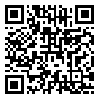Wed, Dec 31, 2025
Articles In Press
Back to the articles list |
Back to browse issues page
1- Department of Exercise Physiology and Sports Injuries and Corrective exercise, Faculty of Sports Sciences, Ferdowsi University of Mashhad, Mashhad, Iran
Abstract: (1084 Views)
Purpose: Correcting the abnormal alignment of the thoracic spine is essential, as it can influence muscle function. This study aimed to evaluate the effects of Pilates exercise on the thoracic kyphosis angle and muscle activity in women with functional Hyper kyphosis deformity.
Methods: Twenty-three women with Hyper kyphosis deformity were randomly assigned to the Pilates group (PG, n = 13) and control group (CG, n = 10). The PG Participated in 18 training sessions. Kyphosis angle was measured using an inclinometer, and muscle electrical activity was measured using surface electromyography (sEMG) in two stages, pre- and post-test. The exercises were performed over six weeks. Data was analyzed using ANCOVA analysis and independent t-test.
Results: A significant difference was observed in the amount of thoracic kyphosis between PG and CG (p=0.001). In addition, there was a reduction in the electrical activity of the upper trapezius muscles (p=0.001) and an increase in the electrical activity in the middle trapezius (p=0.001), the lower parts of trapezius muscles (p=0.001) and the erector spine muscles (p=0.001 p=0.04) in the PG in compare with CG.
Conclusion: Pilates exercises can significantly benefit those with thoracic kyphosis by improving spinal curvature and engaging surrounding muscles. These exercises enhance strength, flexibility, and coordination in the chest area. In addition, practical outcomes such as improved body image, reduced anxiety, and increased body awareness and training are also achieved after doing Pilates exercises. As a result, Pilates is an excellent choice for improving posture and strengthening supportive muscles.
Methods: Twenty-three women with Hyper kyphosis deformity were randomly assigned to the Pilates group (PG, n = 13) and control group (CG, n = 10). The PG Participated in 18 training sessions. Kyphosis angle was measured using an inclinometer, and muscle electrical activity was measured using surface electromyography (sEMG) in two stages, pre- and post-test. The exercises were performed over six weeks. Data was analyzed using ANCOVA analysis and independent t-test.
Results: A significant difference was observed in the amount of thoracic kyphosis between PG and CG (p=0.001). In addition, there was a reduction in the electrical activity of the upper trapezius muscles (p=0.001) and an increase in the electrical activity in the middle trapezius (p=0.001), the lower parts of trapezius muscles (p=0.001) and the erector spine muscles (p=0.001 p=0.04) in the PG in compare with CG.
Conclusion: Pilates exercises can significantly benefit those with thoracic kyphosis by improving spinal curvature and engaging surrounding muscles. These exercises enhance strength, flexibility, and coordination in the chest area. In addition, practical outcomes such as improved body image, reduced anxiety, and increased body awareness and training are also achieved after doing Pilates exercises. As a result, Pilates is an excellent choice for improving posture and strengthening supportive muscles.
Send email to the article author
| Rights and permissions | |
 |
This work is licensed under a Creative Commons Attribution-NonCommercial 4.0 International License. |





